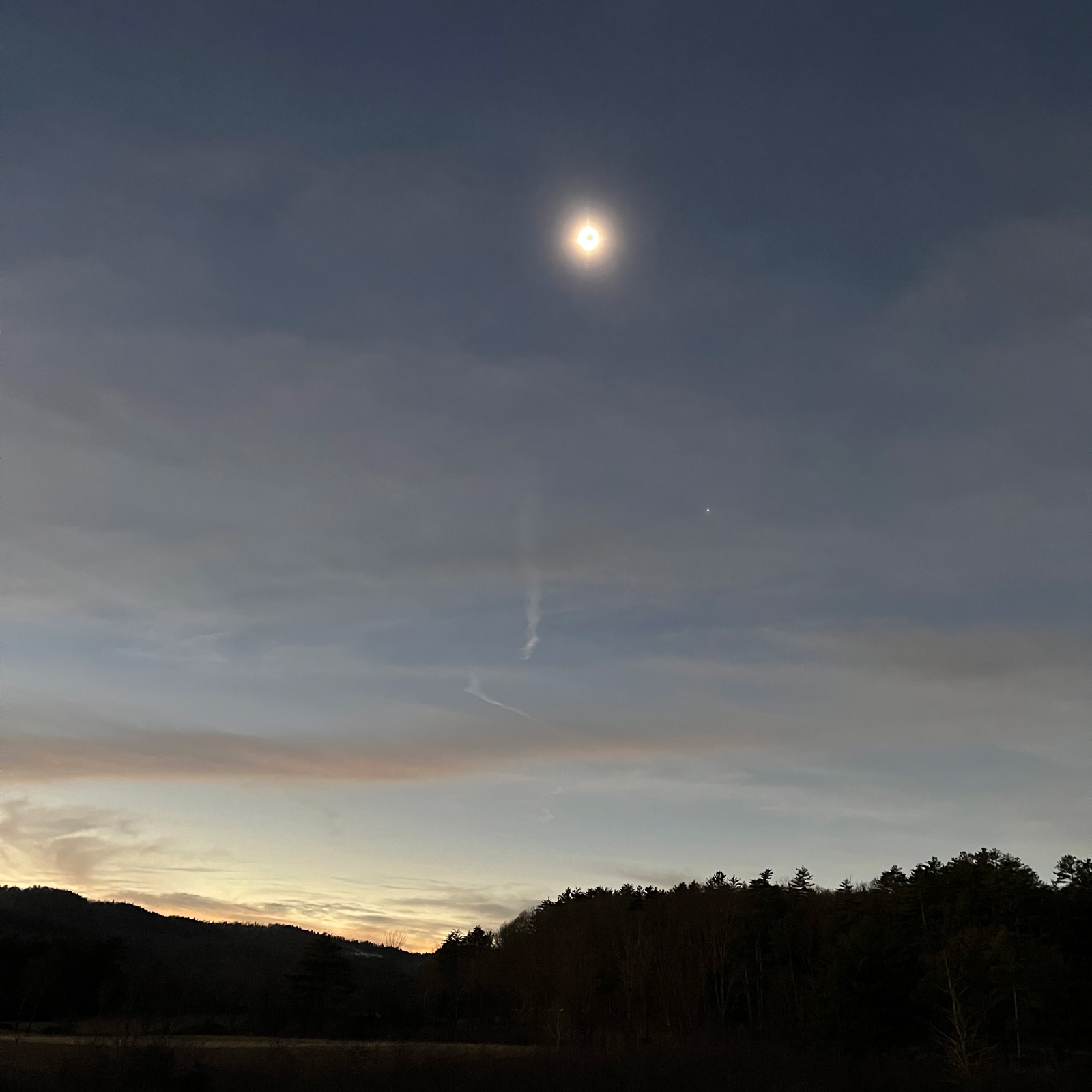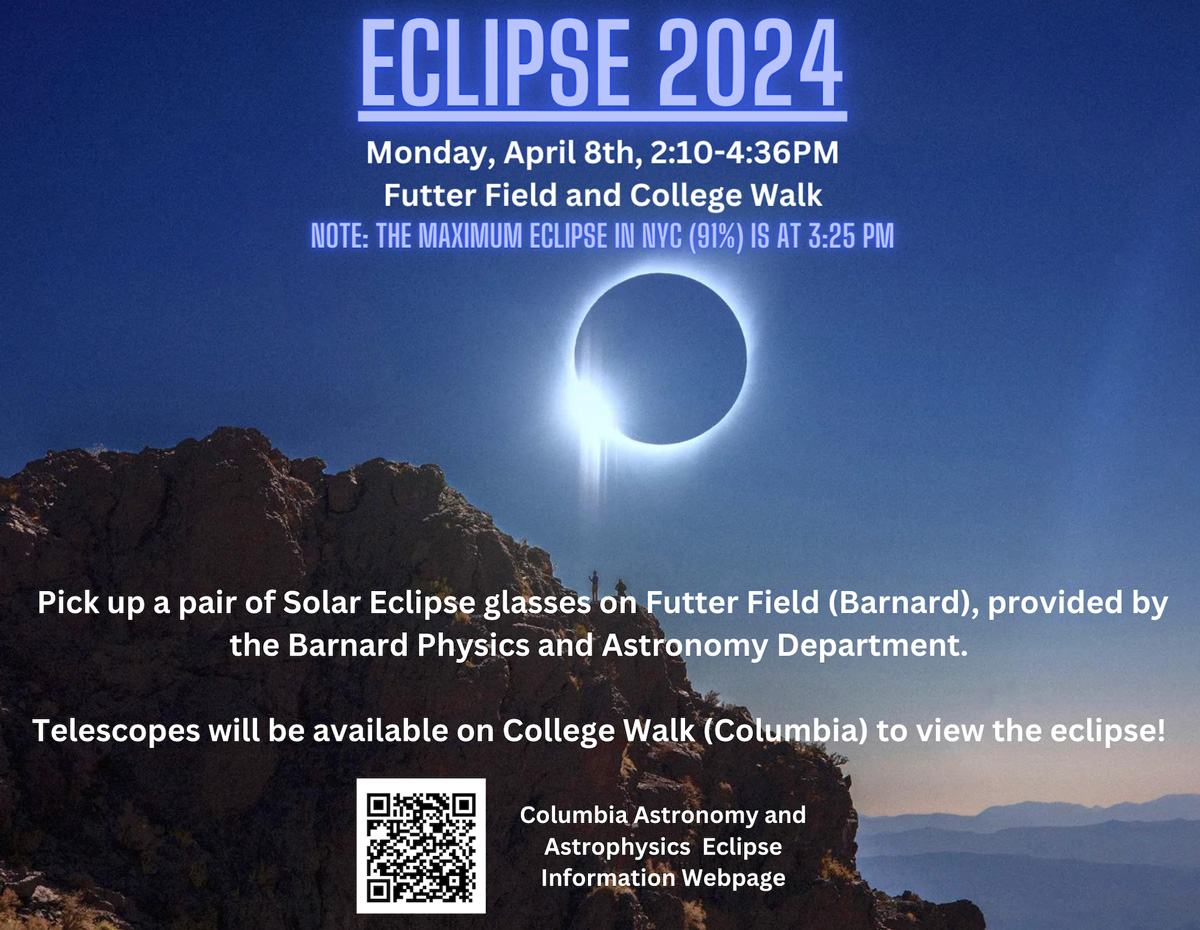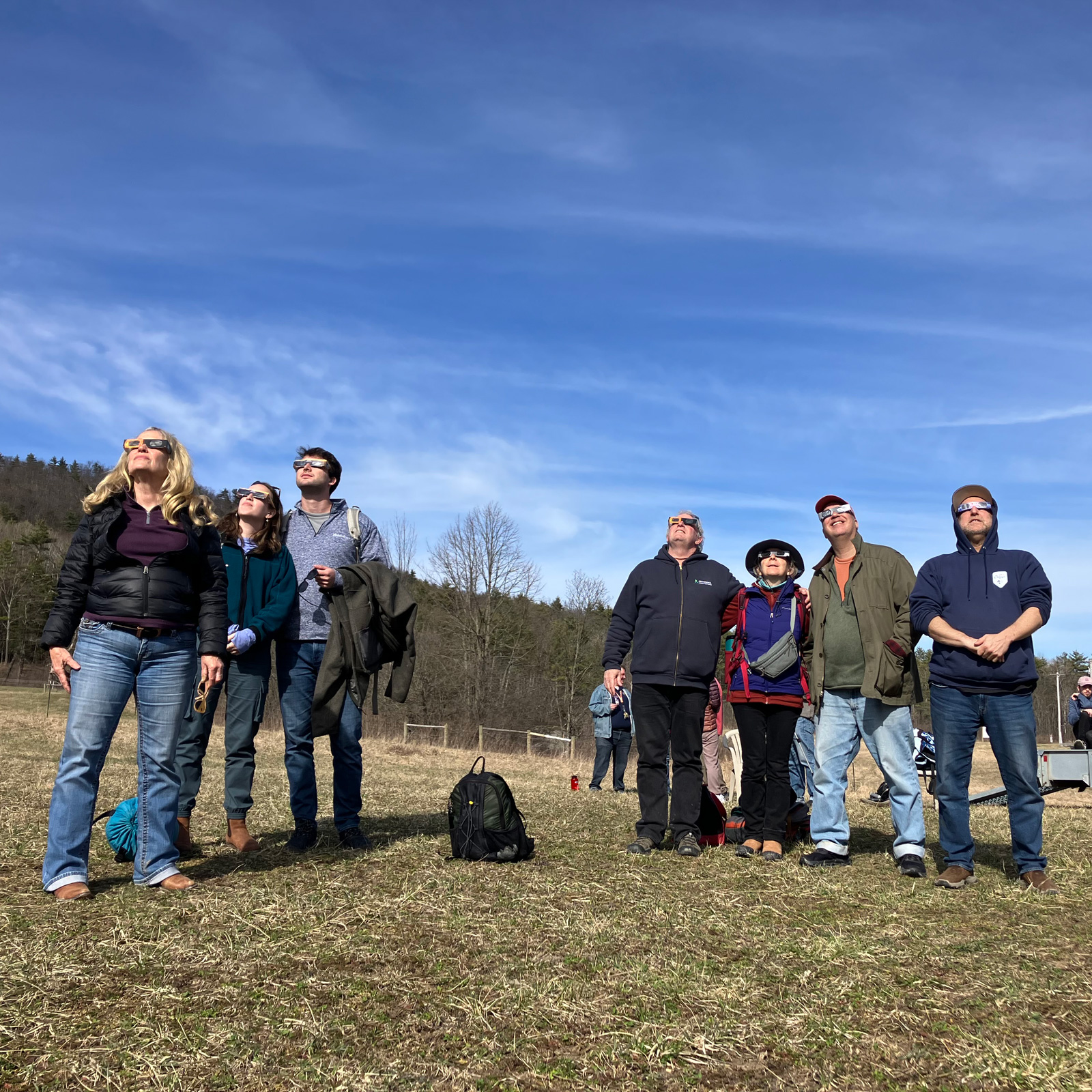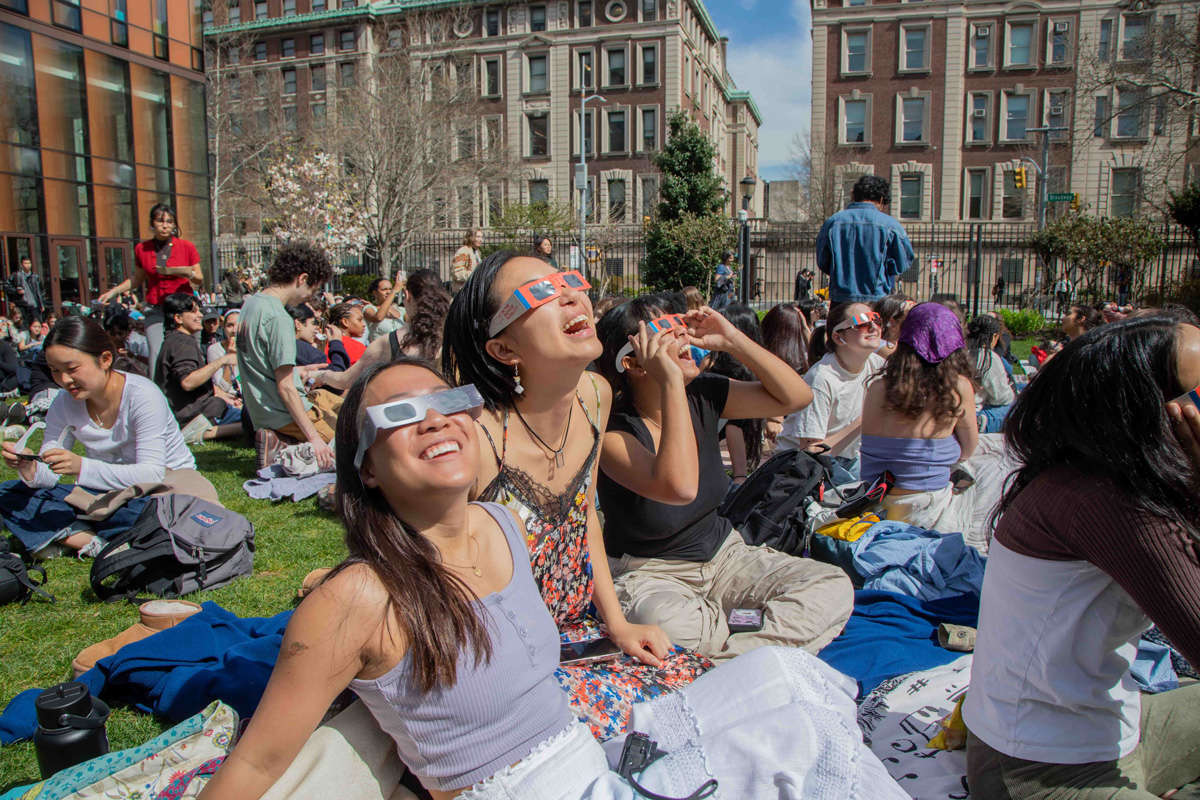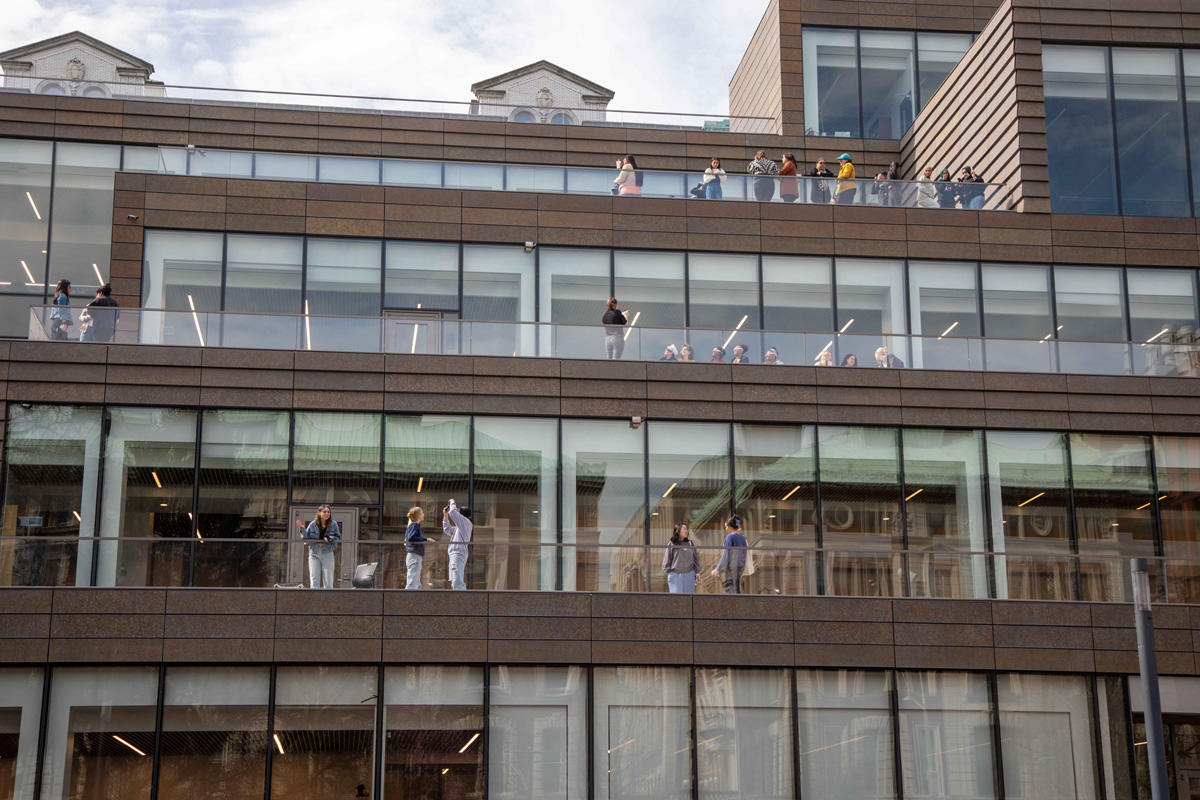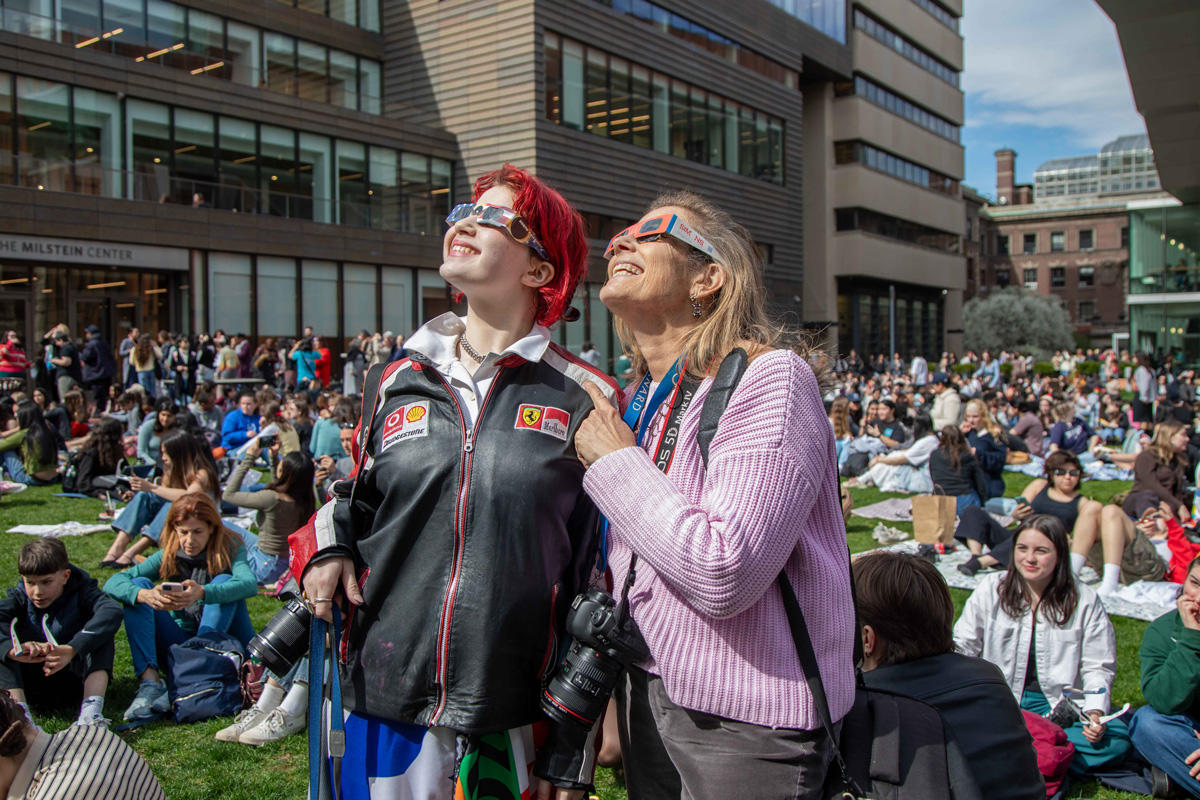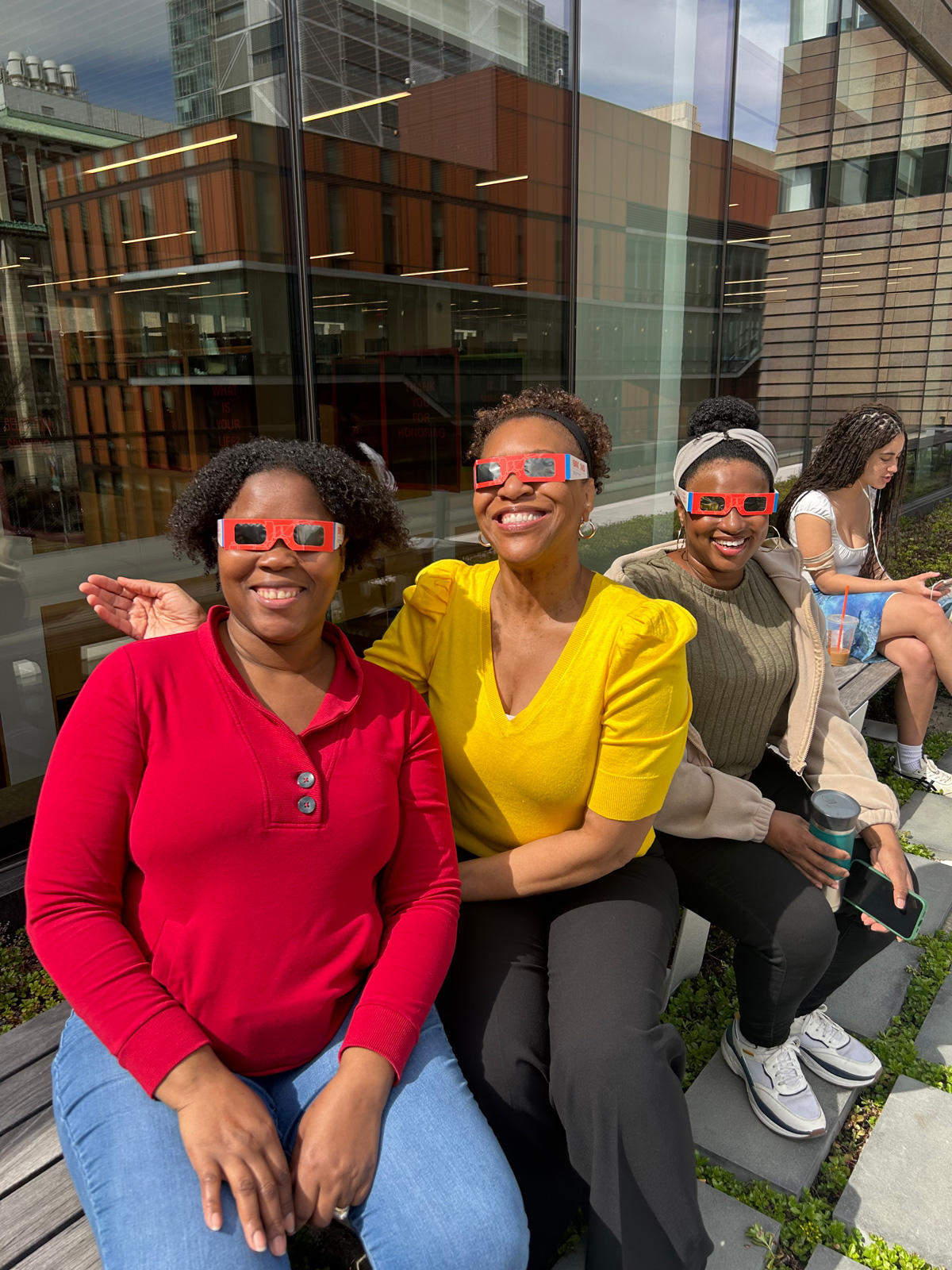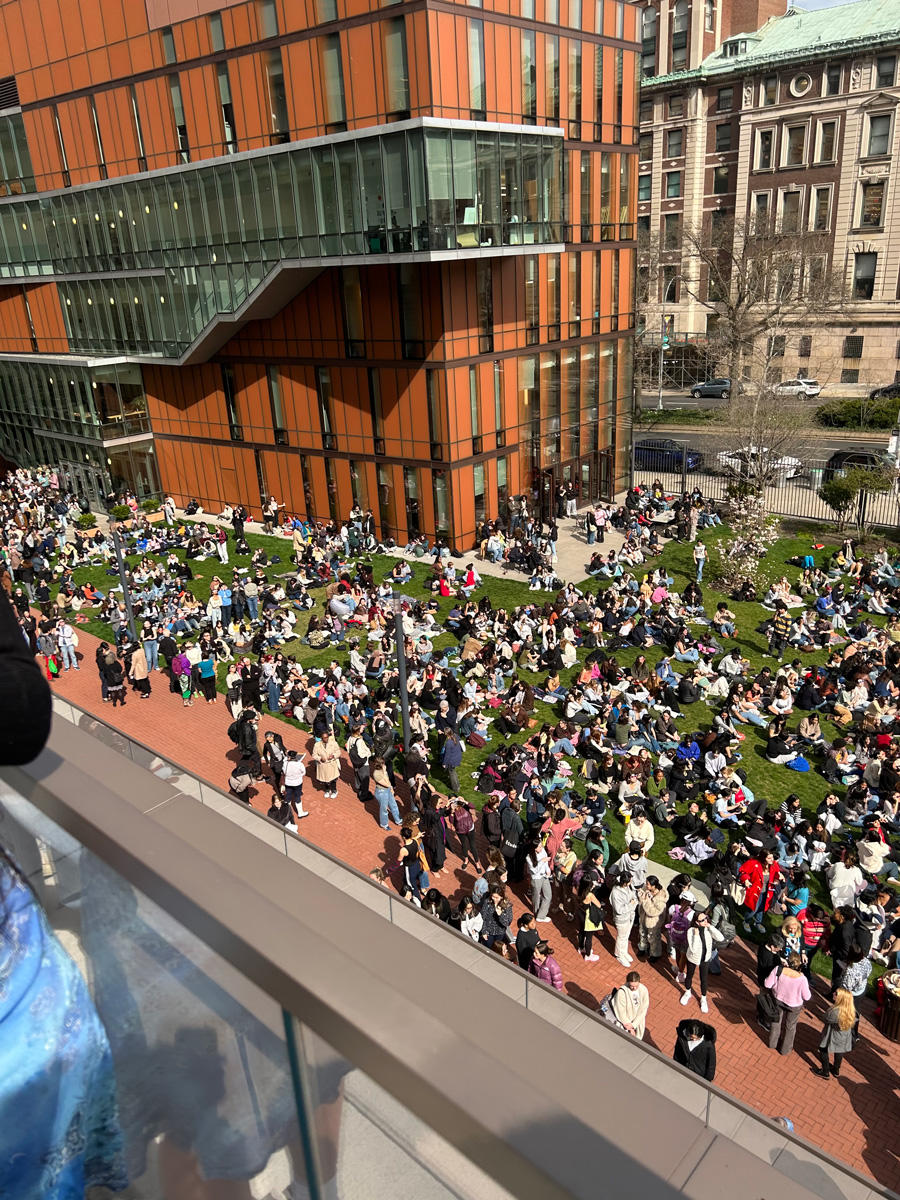On April 8, parts of North America — Canada, the United States, and Mexico — experienced a total solar eclipse. For about four minutes, the bright midafternoon sky darkened to dusk when the moon completely blocked the face of the sun as it passed between the sun and Earth, dropping the temperature 10 degrees. Ironically, the moon’s sun-block can be described as an optical illusion due to the fact that the sun is 400 times wider than the moon but also 400 times farther away than the lunar body, making the two appear to be the same size when their paths cross.
It was 2017 the last time this region witnessed such a solar spectacle; the next one that crosses the U.S. will occur in 2045.
“The Sun will be near a maximum in its 11-year magnetic cycle, leading to the enlarged corona. There should also be plenty of sunspots visible during the partial phases,” Janna Levin, professor of physics and astronomy and the author of How the Universe Got Its Spots: Diary of a Finite Time in a Finite Space, wrote on X.
The Physics and Astronomy Department and Residential Life and Housing provided students with solar eclipse glasses to safely view the cosmic display on Futter Field. Cellular and molecular biology major Monica Rivera ’26, who assisted Res Life with the event, was excited to “nerd out about the mechanics and physics of the eclipse” with her friends on Futter Field. "[Partial and full] eclipses are both awestriking [and] truly remind you of the size of the universe and put your life into perspective,” said Rivera. “It’s one of those events that everyone can connect to on a human level and has been recorded for centuries for that particular reason.”
“It would be impossible to witness an eclipse of the sun and not marvel,” said Levin. “Before humans understood solar dynamics, the spectacle would inspire wonder, even fear, and moreover curiosity. Even now, with our scientific perspective, the alignment of the sun, Earth, and moon is a profound experience, a reminder that we are all on this little planet together subject to forces greater than those we try to control.”
Indeed, many people around the country, and some in the Barnard community, traveled to various locations where viewing is said to be ideal. In the U.S., according to NASA, the path will include parts of Texas, Oklahoma, Arkansas, Missouri, Illinois, Kentucky, Indiana, Ohio, Pennsylvania, New York, Vermont, New Hampshire, and Maine.
Amy Shire, department administrator for the Education Program, drove with her spouse to Westport, NY., where they celebrated with a small group of people. Even though she “saw” the 2017 eclipse in Brooklyn, she had never witnessed totality until this one. “We ended up watching the eclipse with a handful of people, in the large meadow of our farm stay,” she said. “Totality was as though the whole world went to sleep for a few minutes. Birds stopped flying and the air got colder, with the most amazing bright moon glow I’ve ever seen. Before I could absorb it all, it was over.”
For Nora Gross, assistant professor of education, San Antonio, Texas, was ideal for her and her husband. “We flew into Houston yesterday and then drove about four hours to get here. The timing and geography of this one are part of what makes it special to my family,” said Gross. “My son just turned 1 last week, and we haven’t been on a trip with him yet. San Antonio, along the path of totality, is where my husband lived for several years before we met, and it’s a city he loves that I’ve never been to, so we decided to make a trip of it.”
As for the predicted traffic that threatened to clog totality path highways and roads, Gross was grateful that she was with family and far away from stargazing crowds. “We opted for more low-key viewing at my husband’s cousin’s house, which is in the path of totality,” she said. “There will be several babies whom we’ll have to protect from looking into the sun so it will be exciting astronomically and socially!”
